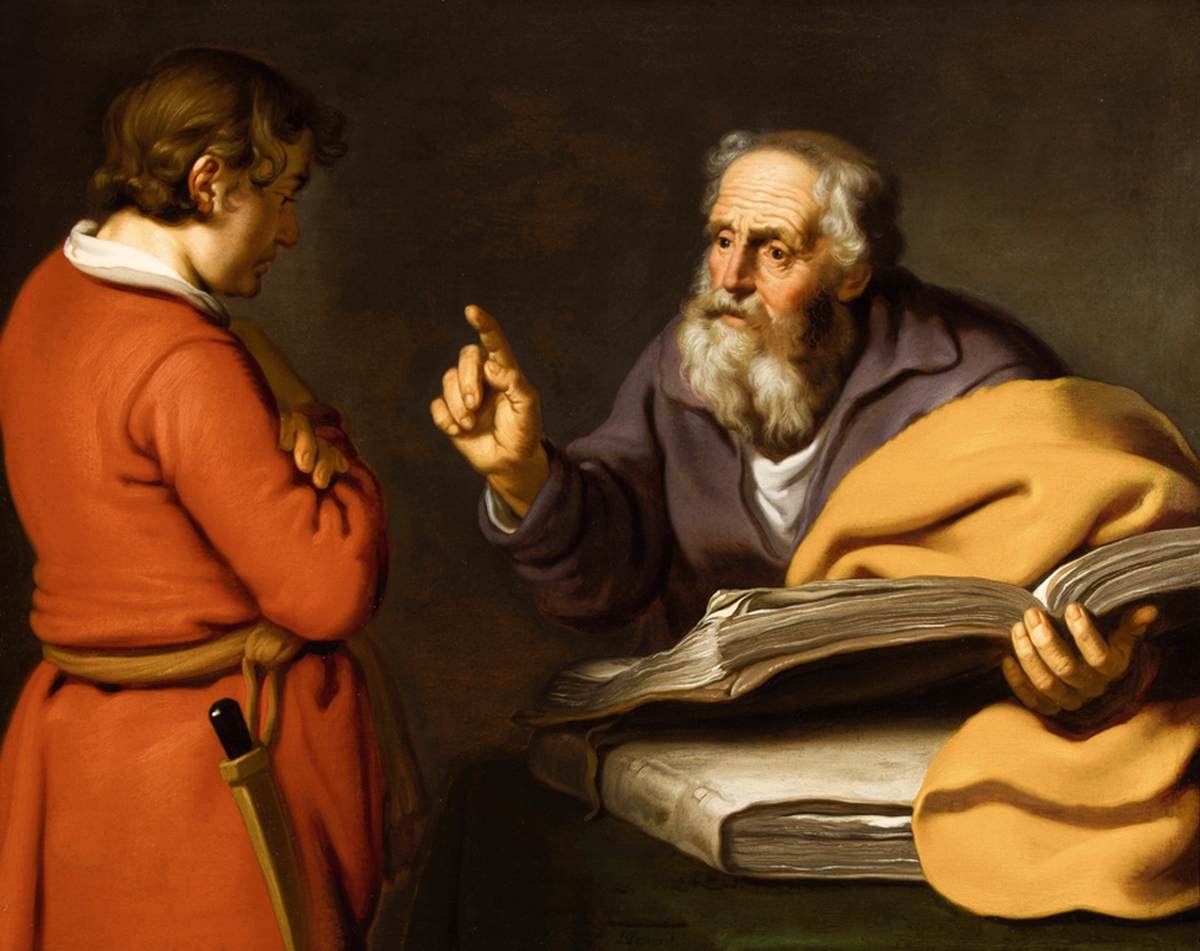Elisha and Gehazi by Lambert Jacobsz, 2 Kings 5:25-26, Bible.Gallery
Artwork Description

The painting depicts the Old Testament episode in which the prophet **Elisha confronts his servant Gehazi** (2 Kings 5:25–26). On the left stands a young man—his back to the viewer and eyes averted—while to the right, a seated elderly figure raises an admonishing finger in rebuke, capturing the tense moment of confrontation.
The backstory involves **Naaman**, a respected commander of the Syrian army who suffered from leprosy. A young Israelite servant in Naaman’s household suggested that a prophet in Israel could cure him. Acting on this, Naaman traveled to Israel with a letter from his king. The king of Israel was unsure how to respond, but **Elisha** stepped in and requested that Naaman be sent to him. Elisha instructed Naaman to bathe seven times in the **River Jordan**. Though initially doubtful, Naaman followed the prophet’s advice and was miraculously healed.
In gratitude, Naaman offered Elisha valuable gifts, including silver and fine clothing. Elisha refused, insisting the healing was God’s work and not to be rewarded. However, his servant **Gehazi**, believing Elisha had slighted Naaman, secretly followed the commander and falsely claimed that Elisha had changed his mind. Naaman gave him two talents of silver and garments, which Gehazi hid in his house. When Elisha confronted him, Gehazi denied the act. Seeing through the lie, the prophet rebuked him and **cursed Gehazi with the same leprosy** from which Naaman had just been healed.